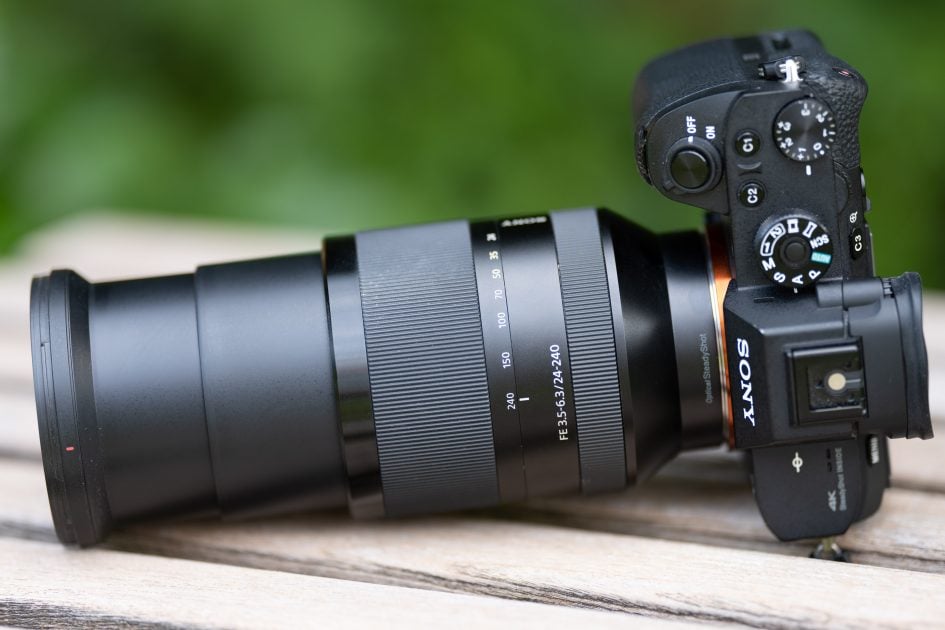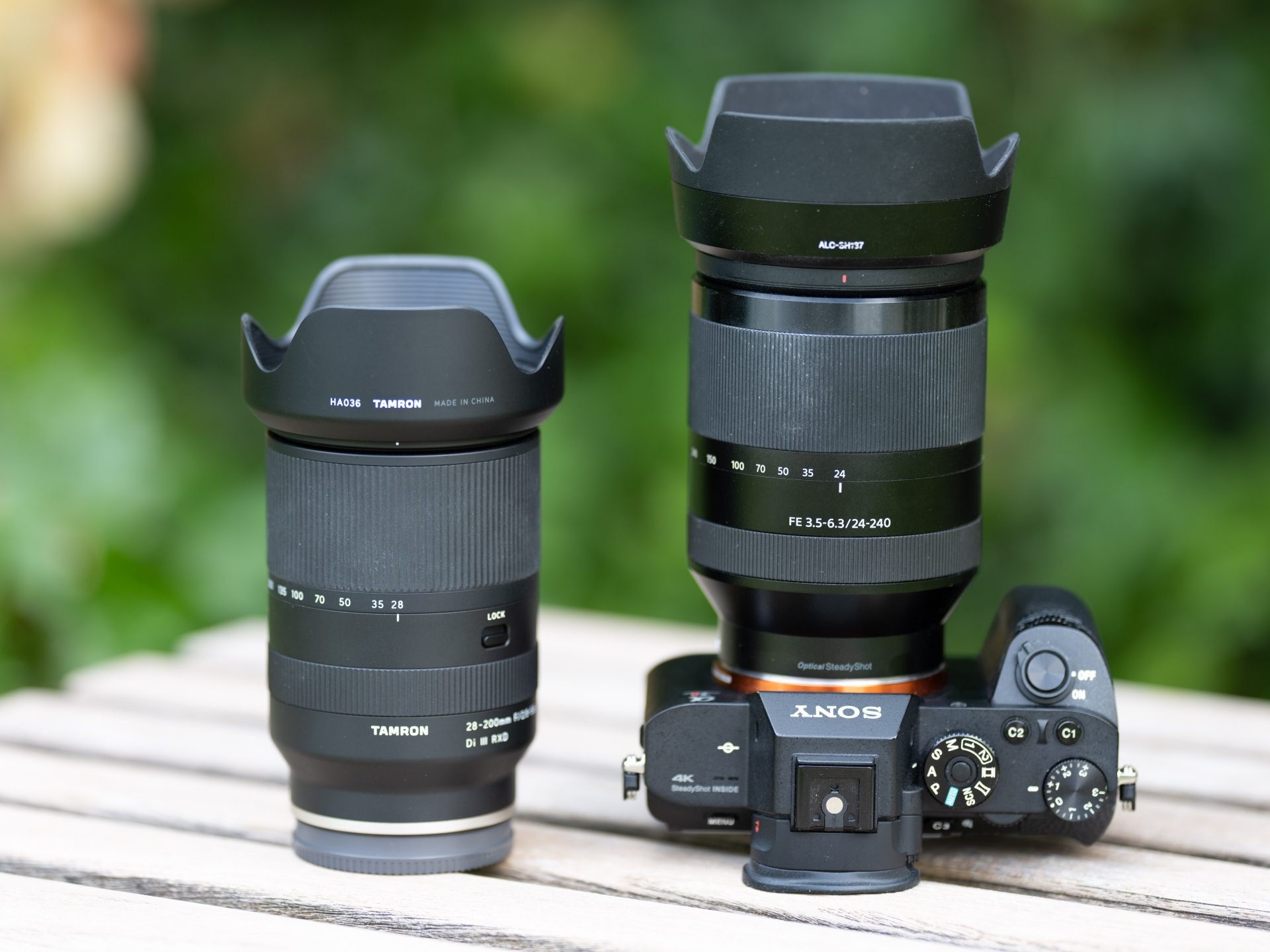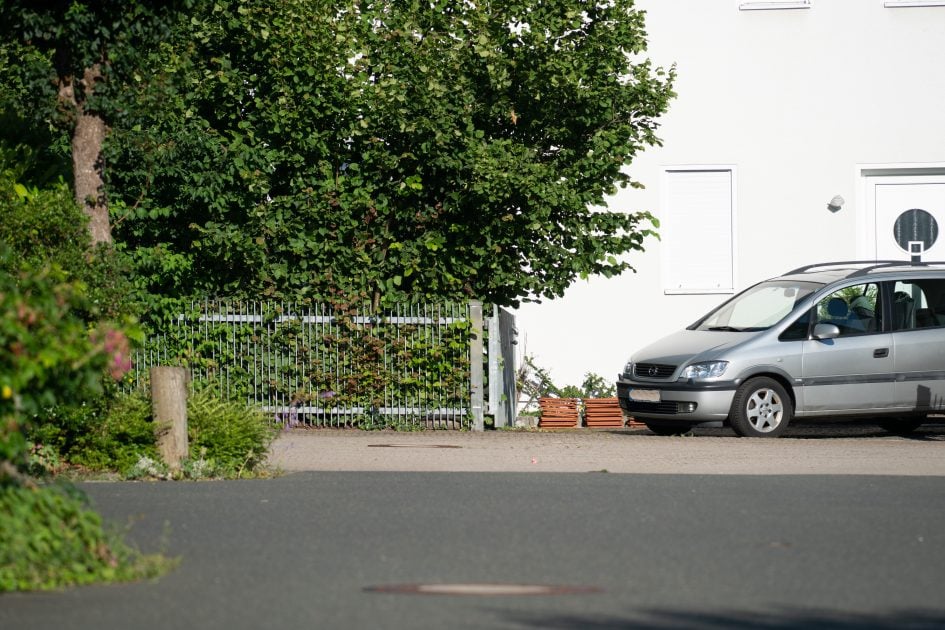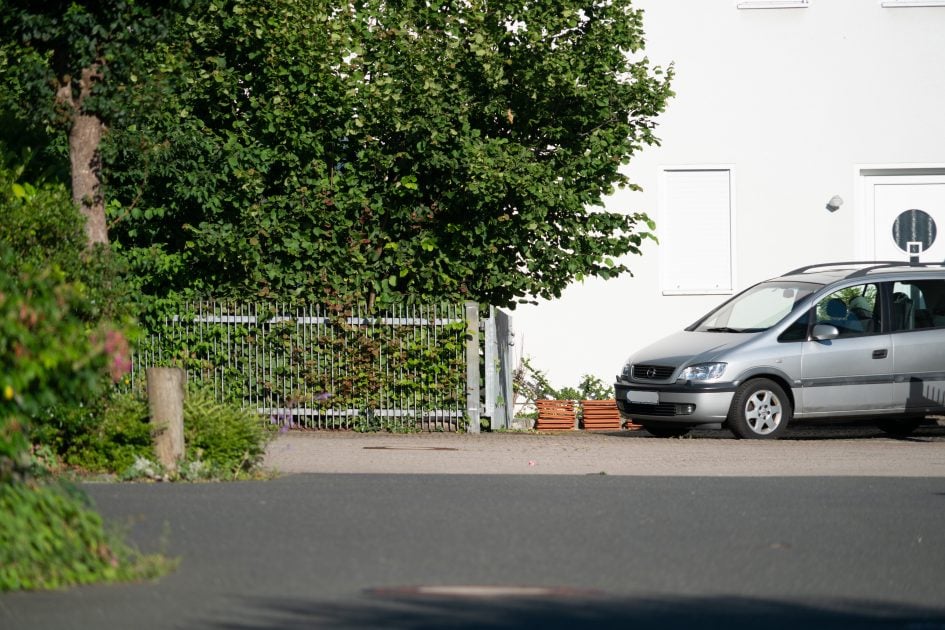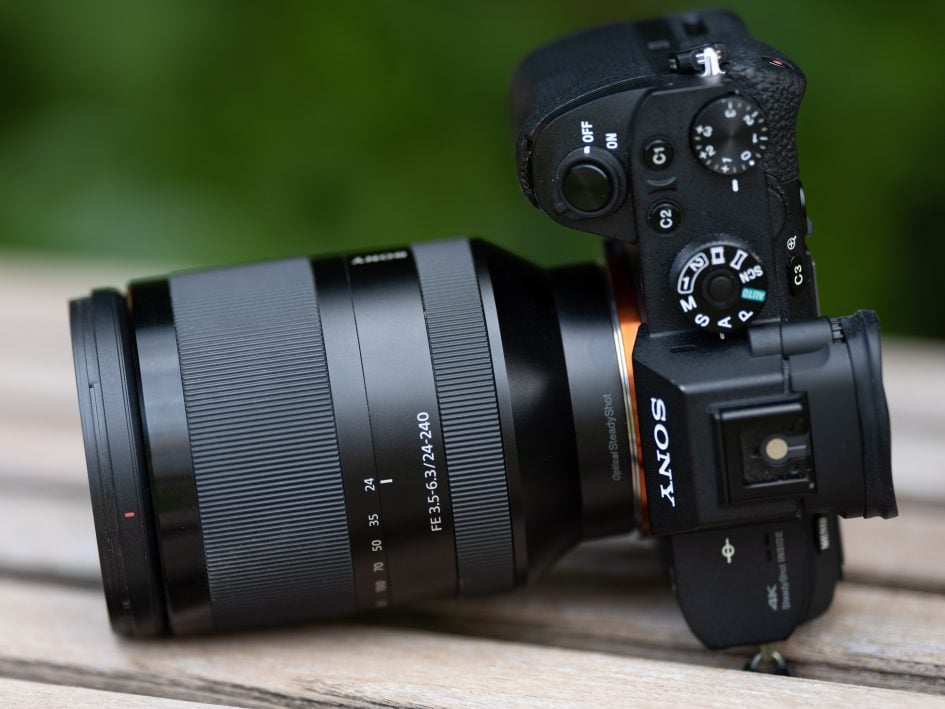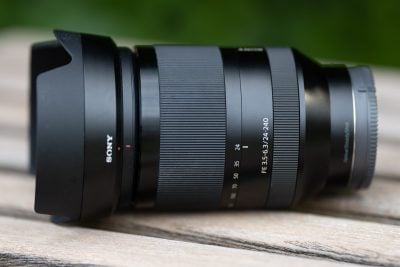Sony FE 24-240mm f3.5-6.3 OSS review
-
-
Written by Thomas
Intro
The Sony FE 24-240mm f3.5-6.3 OSS (model SEL 24240) is an all-in-one zoom from 2015 designed for Sony’s Alpha mirrorless cameras and corrected for full-frame sensors. It covers the zoom range of Sony’s 24-70mm plus 70-200mm zoom lenses and even offers 20% more reach on the long end going up to 240mm focal length. Combined with a very usable close-up magnification of 1:3.6 in a package that is smaller, lighter, and cheaper than the Sony FE 70-200mm f4.0 G OSS alone makes the Sony FE 24-240mm f3.5-6.3 OSS an ideal travel companion which covers a wide array of photographic opportunities – and doesn’t break the bank or your back.
For five years the Sony 24-240mm was without alternative if you did not want to use adapted A-mount lenses. But Tamron recently launched their 28-200mm f2.8-5.6 Di III for E-mount which is a little smaller and 200g / 7 oz. lighter than the Sony, while also offering the larger focal ratio. But the Sony has optical image stabilization and it starts at 24mm focal length giving it a 9 degrees wider angle of view on the short end than the Tamron.
In my review I’ve compare the Sony FE 24-240mm f3.5-6.3 OSS and the Tamron 28-200mm f2.8-5.6 Di III and have a close look at image quality. So if you’re looking for an all-in-one zoom for your Sony Alpha mirrorless camera, you’ve come to the right place!
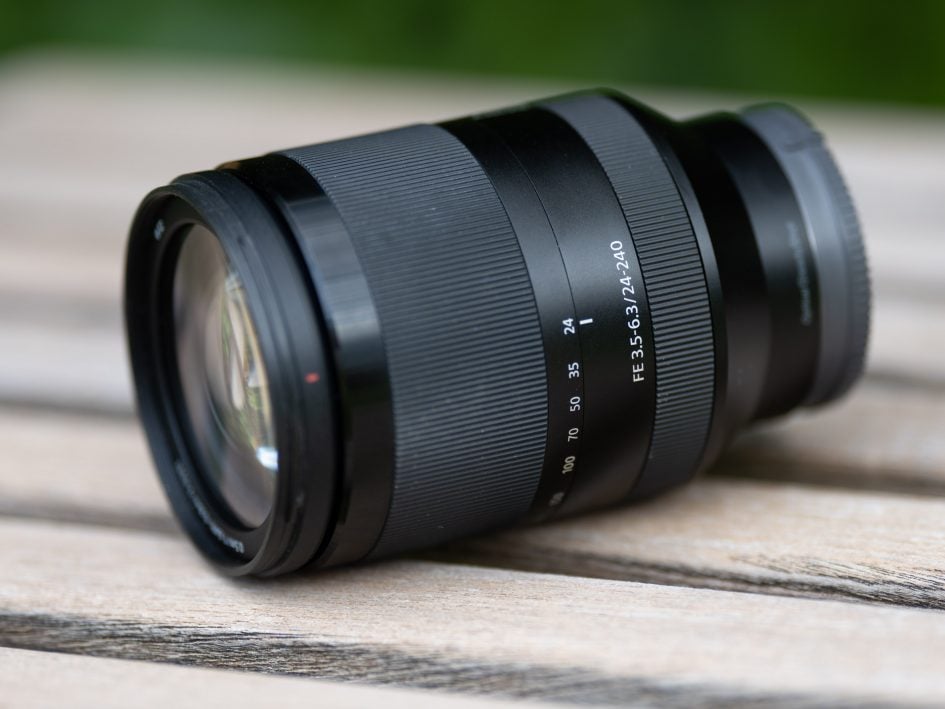
Facts from the catalog
Let’s compare the Sony FE 24-240mm f3.5-6.3 OSS to the Tamron 28-200mm f2.8-5.6 Di III (“Tamron” for short). As usual I’ve rated the features with a [+] (or [++]), when it’s better than average or even state of the art, a [0] if it’s standard or just average, and [-] if there’s a disadvantage.
Size (diameter x length): At 81 x 118mm (3.2 x 4.7in) plus 36mm for the lens hood (which is 98mm in diameter) the Sony is a pretty small lens although the Tamron at 74 x 117mm (2.9 x 4.6in.) + 28mm lens hood is even a bit slimmer. Both lenses have a double barrel design and extend when zoomed to their longest focal length: The Sony to 221mm, the Tamron to 201mm (incl. lens hood). [+]
Weight: 744g (26.2 oz.) plus 39g for the lens hood. The Tamron is 558g (19.7 oz.) + 25g lens hood. Btw.: The Sony 24-70mm f4.0 ZA OSS plus Sony 70-200mm f4.0 G OSS weigh 1.3kg (2.8lb.) together (w/o lens hoods) – 600g (1.3lb.) more than the new super-zoom. But then you gain a constant f4.0 aperture. [0]
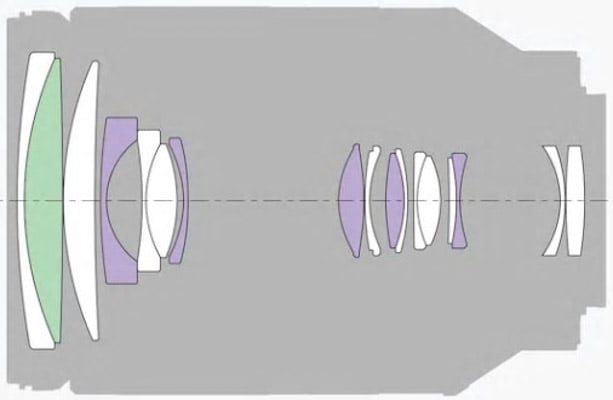
Optics: The Sony FE 24-240mm f3.5-6.3 OSS employs 17 elements in 12 groups including 5 aspherical elements. The Tamron is of a similarly complex construction. [+]
Focal ratio: The Sony starts at f3.5 at the short end, closes down to f4.0 at 28mm, f5.6 at 75mm, and f6.3 from 105mm focal length onward. The Tamron starts with a bright f2.8 focal ratio at the short end and stays 2/3 of a stop brighter than the Sony up to a focal length of 150mm. [0]
Coverage: With its 10x zoom-range the Sony has the upper hand over the 7.1x coverage of the Tamron. This gives the Sony a 9 degrees wider angle of view on the short end (84 degrees vs. 75 degrees). And at 240mm focal length it has 20% more reach than the Tamron. [+]
Closest focus distance of the Sony is 0.42m (1.4ft.) with a meagre magnification of 1:13 at 24mm focal length. At 240mm focal length maximum magnification is 1:3.6 with a working distance of 0.60m (2.0ft.) which is quite good. Closest focus distance of the Tamron is 0.19m (0.6ft.) with a magnification of 1:3.0 and a working distance of only 5 cm (2in.) at 28mm focal length. At 200mm focal length maximum magnification is 1:3.5 at a working distance of 0.57m (1.9ft.). A magnification of 1:10 is achieved at the longest focal length at 2.39m (7.8ft.) distance for the Sony and 2.07m (6.8ft.) for the Tamron. [+]
Filter-thread: The Sony takes 72mm filters, the Tamron 67mm filters. [+]
Image stabilization: The Sony zoom lens has optical image stabilization built in which works together with the sensor-based image stabilization of a Sony Alpha mirrorless camera. The Tamron does not offer optical stabilization. It solely relies on the sensor-based image stabilization of the camera. [+]
Auto focus: Yes, with built-in linear motor drive. Manual-focus override is by simply turning the dedicated focus ring. The focus ring has a variable gearing which allows for very precise manual focus when turned slowly but cannot be switched to linear gearing. Which makes smooth focus pulling for videographers almost impossible. [+]
Both lenses in this comparison cover full frame sensors or can equally be used on a cropped APS-C camera body: the Sony 24-240mm on a Sony Alpha 6×00 is equivalent to a 36-360mm zoom lens on a full-frame camera body. [+]
Price: The Sony costs 780 EUR (incl. 16% VAT) / 1050 USD / 690 GBP. The Tamron comes at a recommended retail price of 869 EUR / 729 USD / 799 GBP but I think we’ll be seeing street prices for the Tamron that are considerably below the RRP. [0]
The Sony comes without a pouch but the lens hood is included and is reversible for transport. Same for the Tamron. The lens hood of the Sony has a rubberized front-end which prevents dings and scratches when you set the lens down on it. [0]
Aperture ring and other control elements: Neither the Sony nor the Tamron have an aperture ring or an AF/MF switch but the Tamron has a zoom-lock. [0]
Sealing: yes, a rubber grommet at the lens-mount plus further special weather-sealing throughout the construction, just like the Tamron. But the Tamron has fluorine-coating on the front element to repel water, dust, and dirt and make cleaning easier – a feature the Sony misses. [+]
The score in the “features-department” is 0[-]/5[0]/9[+] which makes the Sony FE 24-240mm f3.5-6.3 OSS look like a well balanced design. On the plus side is its superior 10x coverage in a small package, the optical image stabilization, and a very useful magnification in close-up shooting. And it starts at 24mm focal length which is sometimes the ticket to get the framing right in wide landscape or architecture shots. Its only drawback is the lowly focal ratio. Tamron has shown that you can design a light and compact all-in-one zoom with more light-gathering power.
Two super-zoom lenses for Sony E-mount
Above: Tamron 28-200mm f2.8-5.6 Di III (left), Sony FE 24-240mm f3.5-6.3 OSS (right)
Alternatives
Currently no other manufacturer offers a zoom lens covering 24-240mm – except Canon for their RF-mount. So users of Sony Alpha mirrorless cameras either have to make do with a shorter focal ranges or get two zoom lenses: one for the wide end (like 24-70mm) and one tele-zoom e.g. 70-300mm. But then you will be switching lenses often – and probably missing shots. So the only real alternative with E-mount is Tamron’s new all-in-one zoom lens:
- Tamron’s non-stabilized 28-200mm f2.8-5.6 Di III is a new mirrorless design currently only available in Sony E-mount. It’s practically the same small size as Sony’s 24-240mm, is 200g lighter, and offers a 2/3 of a stop brighter focal ratio over most of its zoom range. But it does not offer optical stabilization and only starts at 28mm focal length which results in a 9 degrees shallower angle of view than the Sony. The lens comes at a recommended retail price of 869 EUR / 729 USD / 799 GBP. For more information see my Tamron 28-200mm f2.8-5.6 Di III review.
Here is the angle of view that the Sony FE 24-240mm f3.5-6.3 OSS covers with its 10x zoom compared to the coverage of Tamron’s 7.1x zoom lens:
Above: Sony FE 24-240mm f3.5-6.3 OSS coverage on a Sony A7R II full-frame camera at 24mm (left) and 240mm (right), Distortion Control ON
Above: Tamron 28-200mm f2.8-5.6 Di III coverage on a Sony A7R II full-frame camera at 28mm (left) and 200mm (right), Distortion Control ON
The difference between the coverage of the Sony and the Tamron on the short end is clearly visible and might be a decisive factor for choosing a zoom lens. Not always can you step back with a 28mm lens to get the wider view of a 24mm lens. And the other thing of note: The benefit of reaching 240mm with the Sony is perhaps not as big as expected. If the image at 200mm is sharp enough, cropping a 42MP shot at 200mm to match the angle-of-view of at 240mm still nets you around 29MP. This might well be enough for the intended purpose.
Here is an example from the Tamron 28-200mm at 200mm cropped to match the Sony FE 24-240mm at 240mm:
Above: Tamron 28-200mm f2.8-5.6 Di III, shot at 200mm f5.6, cropped to match image below; click image for 6545×4366 px version
Above: Sony FE 24-240mm f3.5-6.3 OSS, shot at 240mm f6.3, resized to match image above; click image for 6545×4366 px version
Focus and zoom
Focus accuracy and repeatability is critical to consistently produce sharp shots. Repeatability (the accuracy of focus on the same subject after repeated focus-acquisition) of this lens at 200mm focal length is very good (measured 98.8% in Reikan FoCal) with no outliers over a series of 40 shots. There is no focus variation whether the lens focuses from a closer distance or from infinity and I detected no hunting. At 200mm focal length the lens focuses in around 0.5 sec from infinity to 2 m (1:10 magnification), which is a bit faster than the Tamron 28-200mm which takes around 0.6 sec.
The zoom ring turns through 80 degrees and has a 31mm wide rubber surface with a good grip. It turns with quite some resistance and can not be operated with one finger. Still the lens shows a little zoom creep. The focus ring is only 13mm wide and is located closer to the camera. It also has a rubberized surface, moves smoothly, and can easily be operated even with your pinky.
AF-operation and image stabilization of the Sony 24-240mm is inaudible from the outside or if you record video with the built-in microphone.
As you pull focus, you’ll notice some focus breathing: the image becomes a little more magnified at closer focusing distances. When I adjusted the focus from infinity to 2.39m on the Sony at 240mm focal length, I measured a 1% increase in magnification. This is hardly visible and should please videographers. The same test at 24mm focal length produced no visible breathing. The Tamron exhibits similarly insignificant focus breathing.
I also tested whether Sony’s zoom lens allows you to change the focal length without altering its focus. This characteristic is called parfocal. I focused the lens at 240mm and then slowly zoomed back checking focus on the way. The FE 24-240mm f3.5-6.3 OSS did not keep its focus very well: the lens became quickly less sharp and then suddenly snapped back into perfect focus. See the following 100% crops:

Above: Sony FE 24-240mm f3.5-6.3 OSS zoomed back from 240mm to 237mm (left) and then 233mm (right) without refocusing, 100% crops from center
Obviously this zoom lens is not optically designed to be parfocal but Sony implemented a control curve to compensate for the effects of zooming on focus. But the implementation of this perfectly valid idea seems not good enough even for videographers filming at lower resolutions. So the old rule still applies: When you change focal length (even a tiny bit), re-focus!
Image stabilization
To test the effectiveness of the image stabilization with the Sony FE 24-240mm f3.5-6.3 OSS on a Sony A7R II camera body, I did a series of 140 test-shots hand-held at 200mm focal length and tested with shutter speeds from 1/200 of a second down to 1/6 sec. I used the shots at 1/200 sec with SteadyShot=off as reference of how good my hand-holding was at the time of the test and Reikan FoCal did the chore of evaluating the sharpness of all shots.
Here’s the results: With SteadyShot switched on the combo produced results down to 1/50 sec (2 stops) which were on average as sharp as at 1/200 sec with SteadyShot=off. At 1/25 sec (3 stops) average quality sank below that but was still quite usable. But at 1/12 sec (4 stops) results became very erratic with only a few usable shots and at 1/6 sec (5 stops) results were dismal. This is an advantage from the image stabilization at 200mm focal length just short of 3 stops.
Next check out my quality results!
Check prices on the Sony FE 24-240mm f3.5-6.3 at Amazon, B&H, Adorama or WEX! Alternatively get yourself a copy of my In Camera book or treat me to a coffee! Thanks!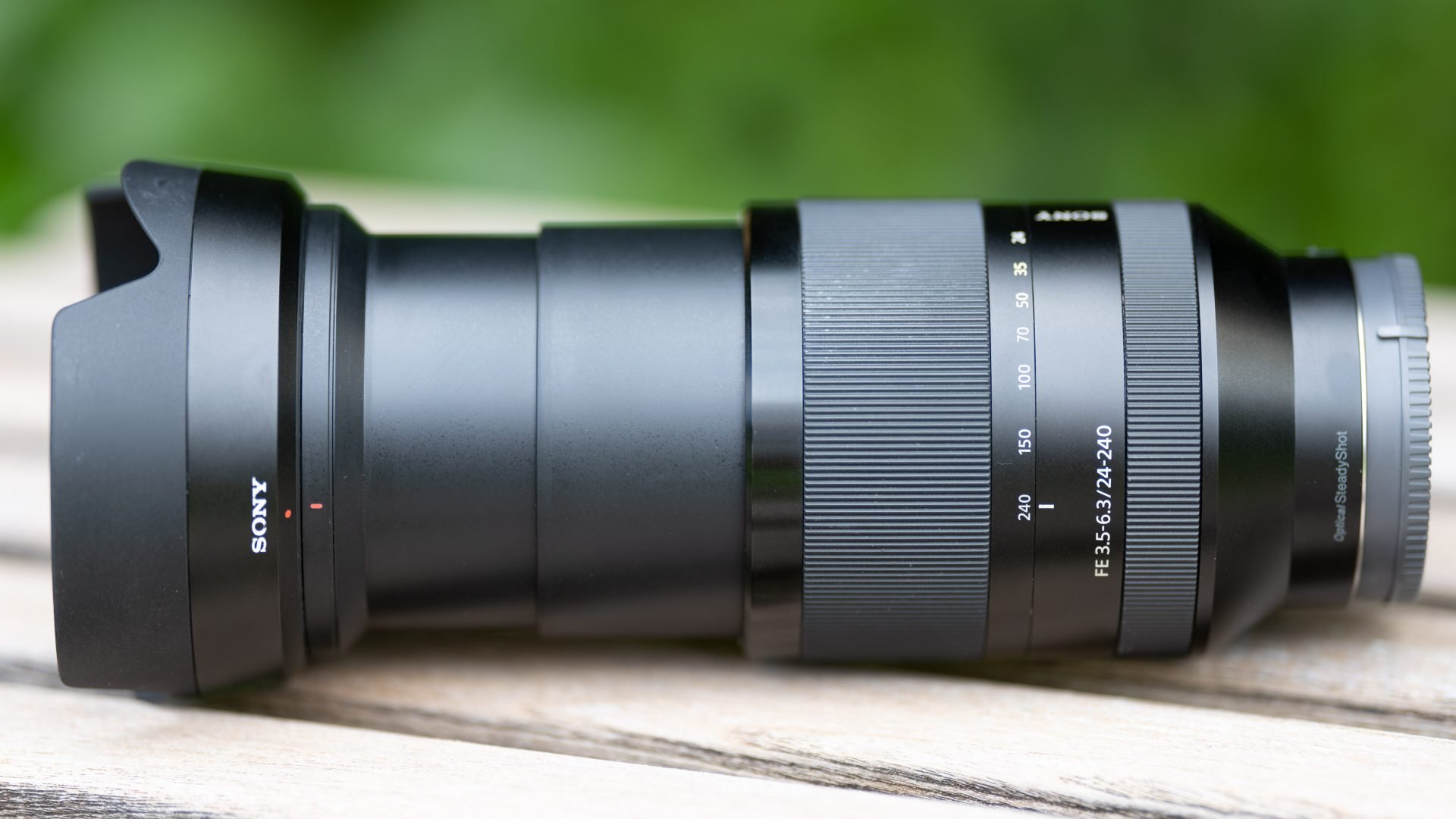
 The Sony FE 24-240mm f3.5-6.3 OSS is a small and relatively light super-zoom which offers a huge 10x zoom-range with the wide end starting at 24mm focal length. Together with a useful 1:3.6 magnification the lens is an ideal travel companion which covers a wide array of photographic opportunities and isn't too expensive either. But I had expected more from the optical images stabilization which could partly compensate for the lowly focal ratio. And sharpness of the lens at focal lengths beyond 105mm is not a good match for todays high resolution sensors. But still: the versatility of the FE 24-240mm f3.5-6.3 OSS is unmatched which earns it a recommendation!
The Sony FE 24-240mm f3.5-6.3 OSS is a small and relatively light super-zoom which offers a huge 10x zoom-range with the wide end starting at 24mm focal length. Together with a useful 1:3.6 magnification the lens is an ideal travel companion which covers a wide array of photographic opportunities and isn't too expensive either. But I had expected more from the optical images stabilization which could partly compensate for the lowly focal ratio. And sharpness of the lens at focal lengths beyond 105mm is not a good match for todays high resolution sensors. But still: the versatility of the FE 24-240mm f3.5-6.3 OSS is unmatched which earns it a recommendation!